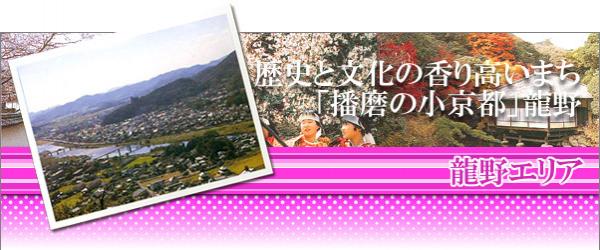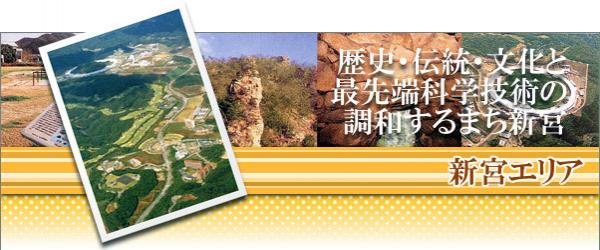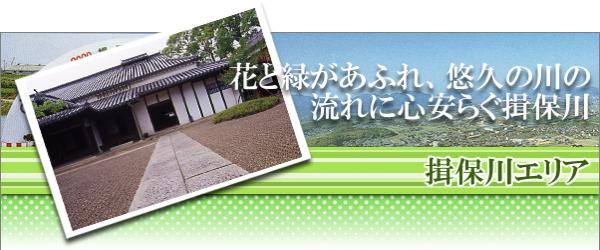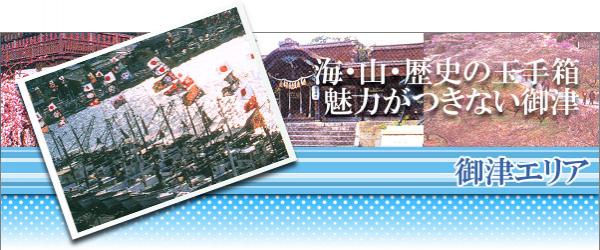Area Information
Main content starts here.
Update:March 10, 2012
Area Information
Tatsuno Area

Tatsuno: A city of history and culture, "Little Kyoto of Harima"
Town of the Wakizaka Domain (53,000 koku), is rich in greenery and nature, with the clear waters of Ibo River and the primeval forests of Mt. Keiro. It is known as the “little Kyoto of Harima”, and samurai houses, storehouses with white walls and monuments of many forefathers of the town remain. There are also many cultural properties dotted around the city. Many industries, including electronics and chemicals continue to grow alongside the local industries of soy sauce, somen noodles and leather. The areas around Tatsuno-Nishi I.C. on the Sanyo Expressway and the Harima Tatsuno Industrial Area are thriving new hubs due to housing developments and the attraction of enterprises to the area.
Also, as the home of the famous Japanese nursery rhyme ‘Akatombo’ (Red dragonfly), the city promotes culture through nursery rhymes. In addition, the many events it holds throughout the year including the cherry blossom festival, the citizen’s festival and the leather festival invigorate the community.
Shingu Area

Shingu : A harmony of history, tradition, culture, the most advanced science and the technology
The Shingu area has flat land stretching out around Ibo River and Kurisu River, and the rest of the area is hilly with relatively steep slopes.
The west area is appealing to the world with the Harima Science Garden City which has the world’s largest synchrotron radiation facility “SPring-8” used for research and development and the Hyogo Ion Beam Medical Center where cutting-edge cancer treatment using proton and carbon beams is being carried out.
In the north area is the Shingu Miyauchi Ruins, which date from the Jomon Period (about 3000-12000 years ago) to the Heian Period (794-1192) and are centered on the nationally designated historical ruins from the Yayoi Period (about 1800-3000 years ago). Other nationally designated sites in the area are the cliff Byobuiwa in Hashisaki, the main hall of Miyauchi Tenjin Shrine and Yoshima Ancient Tomb.
Ibogawa Area

Ibogawa river, overflowing with flowers and greenery and a perpetually flowing river that soothes your heart
The Ibogawa area is blessed with an abundance of nature centered on the Ibo River, and is a main transportation zone with Route 2, the Sanyo Expressway and the JR Sanyo Main Line passing through it. Recently it has also been developing as a housing area.
In the south, suburban farming is thriving with the cultivation of vegetables and flower-bed seedlings, and in particular the Ibogawa tomatoes grown in this area are the most well-known products. Also, cosmos, safflower, corn and others are grown on fallow field and events are held when the flowers are in bloom to pursue exchange between the urban and rural areas.
The area’s industries include traditional soy sauce making, airbag parts manufacturing (for which it has the top market share in Japan) and reinforced resin production, and many cutting edge companies boasting high levels of technology are based here.
The area also has historical sites and nature areas such as the Nagatomi Family Residence, which is a designated Important Cultural Property, and the mountain foothill walking trail Yahho-no-mori.
Mitsu Area

A treasure box of the sea, mountain and history, the charm of Mitsu will never end
A treasure box filled the sea, mountains and history never-ending charm of
The Mitsu area is on the coast, and in the eastern area is Shinmaiko Beach, which is part of the Setonaikai National Park and is the most famous shallow beach in Kansai. It comes alive in the clam hunting season in spring and the swimming season in summer.
In the west are the plum groves of Mt. Ayabe, where it is said you can see 20,000 trees in one glance, and that boasts over 300 kinds of plum trees from around the world. Fields of rape blossoms stretch out across one side at the foot of the mountain’s plum groves.
In Murotsu ‘a port town of history and romance’ in the west, are Kamo Shrine, which is an Important Cultural Property, the Murotsu Museum of Folklore, which is housed in the restored Edo Period (1603-1868) residence of a wealthy merchant, and Murotsu Museum of Sea Port.
You can also enjoy fresh seafood from the Seto Inland Sea; the vegetables grown on Nariyama Shinden, which stands on reclaimed land, and products made from the local specialties plum and brewing rice, such as plum wine, pickled plums and sake called “Shinriki”. The area also has the largest production volume and share of school satchels in Japan.
